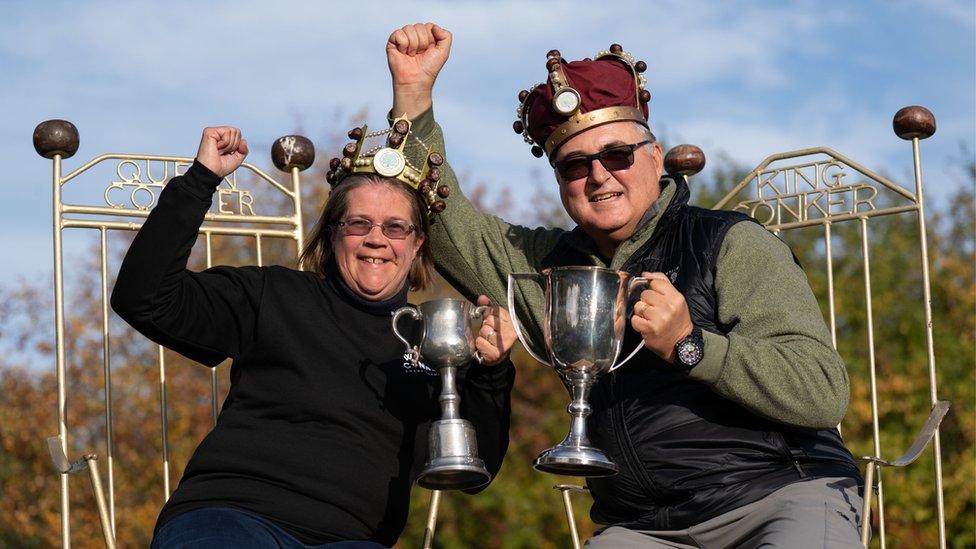World Conker Championships: What makes for an all-conquering horse chestnut?
- Published
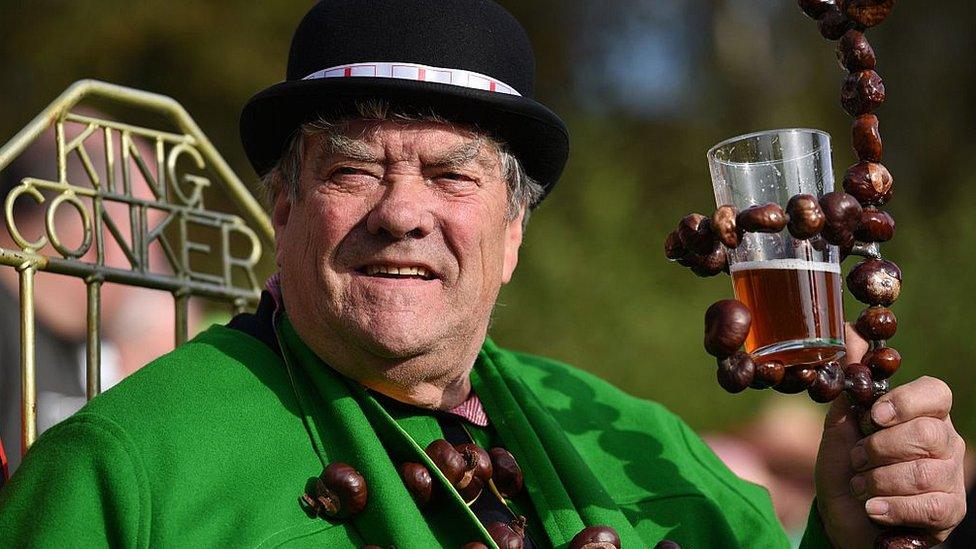
The ideal conker would be "perfectly round", says David Jakins, King Conker of the World Conker Championships
Conker players from across the globe are currently descending on a small village in Northamptonshire for the World Conker Championships. What does it take to conquer all challengers and what makes for the perfect conker?
The annual World Conker Championships have been staged more often than both the Olympics and the Winter Olympics combined.
And just like the Olympics, elite conkering comes with a raft of rules and measures designed to keep performance enhancing measures off the field.
All conkers are selected and supplied by the organisers of the World Championships, held at Southwick, near Oundle since 1965.
Players, who cannot bring their own favourite conkers, draw their conkers unseen from a bag and have the right to reject up to three horse chestnuts on the basis of close inspection.
But what should contestants be looking for?
The ideal conker would be "perfectly round", says David Jakins, King Conker of the World Conker Championships. "There's no advantage to having a poor conker.
"You never get a perfectly round conker", he says. "But you want to get it as near as possible."

What is a conker?
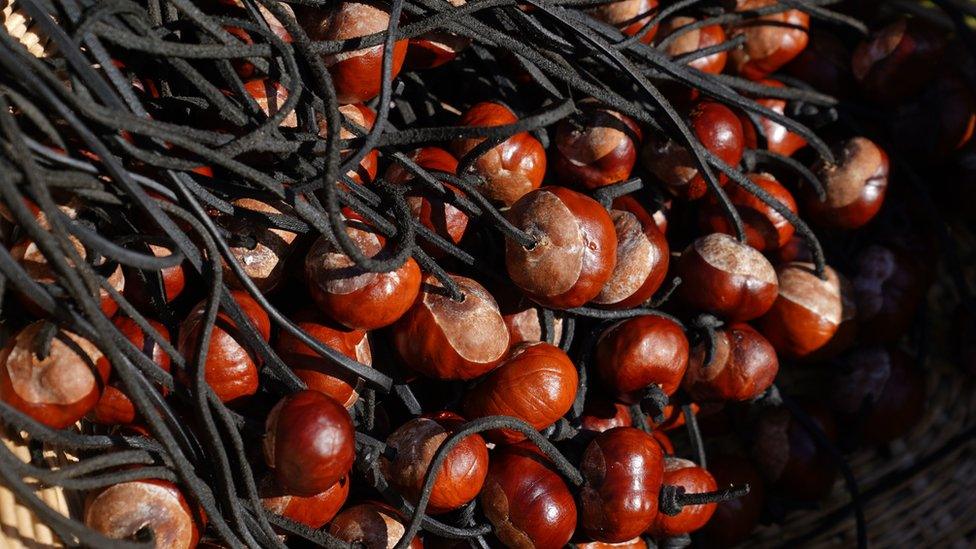
Each horse chestnut is then graded, precision drilled and laced by volunteers from Ashton Conker Club for the competitors
Conkers are the glossy brown seeds of the horse chestnut tree
They grow in green spiky cases and fall to the ground in autumn
The conker shells often split on impact to reveal the shiny conker inside
Conkers contain a poisonous chemical called aesculin which is poisonous to humans and most animals, including, strangely enough, horses
Source: The Woodland Trust, external

Volunteers collect about 4,000 conkers for the world championships which each year attract about 300 competitors and 5,000 spectators.
Each horse chestnut is then graded, precision drilled and laced by volunteers from Ashton Conker Club for the competitors.
King Conker warns that this year's conkers are looking "slightly smaller" than usual.
"It all depends on the weather conditions during the year - it is beyond the control of the conker club," he says.
A conker's density and hardness will also affect its performance.
Away from the strictures of the world championships, some conker players are known to dabble in performance-enhancing measures to improve their conkers.

Conkers deemed too hard for competition are sent for a 24-hour water soak to soften them up
"People at home inject glue into them or put them in the freezer," says King Conker. "They'll do god knows what to get a winner.
"You can't do that in the championships."
Conkers deemed too hard for competition are sent for a 24-hour water soak to soften them up a tad.
Selected conkers are then drilled and laced with square profile leather strings measuring 4.2mm (0.17in) from corner to corner with a single knot at the end. Second knots are banned.
For years the tournament's conker gatherers have collected the championship nuts from the car park of the Red Lion pub in the north Northamptonshire village of Warmington.
"That's one of the normal places," says King Conker.
"This year it is a public house at Fotheringhaye," he says. "They always drop onto the soft floor so they could be even better this year."
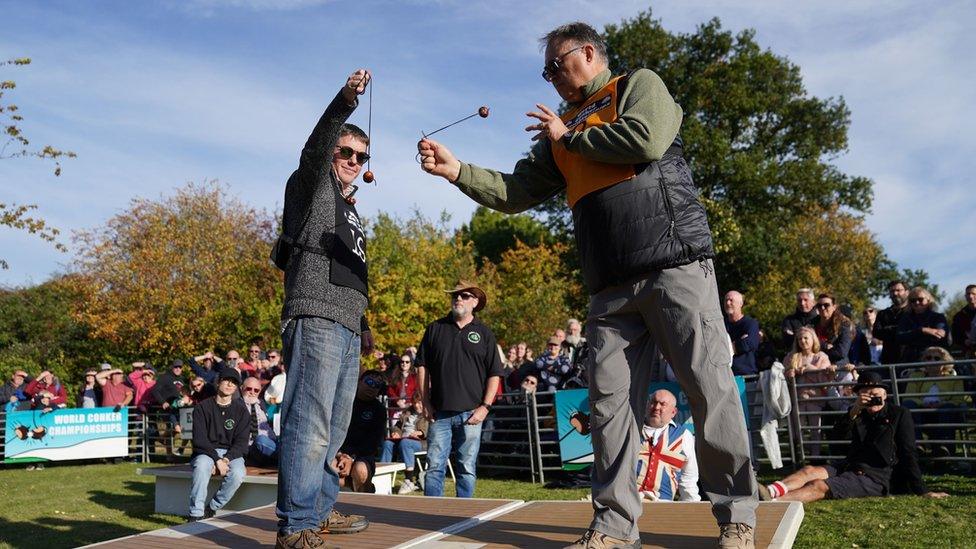
Randy Topolnitsky takes the winning shot during last year's World Conker Championships
Unlike Olympic disciplines, conker success does not necessarily involve years of practice.
Take the current men's world champion Randy Topolnitsky, for example.
Mr Topolnitsky, who lives in Calgary, Canada, was on holiday visiting friends in the UK when they mentioned they were taking part in the championships.
"We had never heard of the championships before," he said. "We did a little bit of practice and started competing and everything just came together that day.
"I just kept going and going and going and then it happened - I won."
Mr Topolnitsky was somewhat coy when quizzed about his conker technique.
"I can't give away my secrets," he says. "But I think a steady hand, concentration and keeping calm are essential.
"As for the swing, I think it is all in the wrist action and a steady arm movement."
He is sitting out this year's championships but plans to return at some point in the future to try and reclaim his conker crown.

Playing conkers: The rules
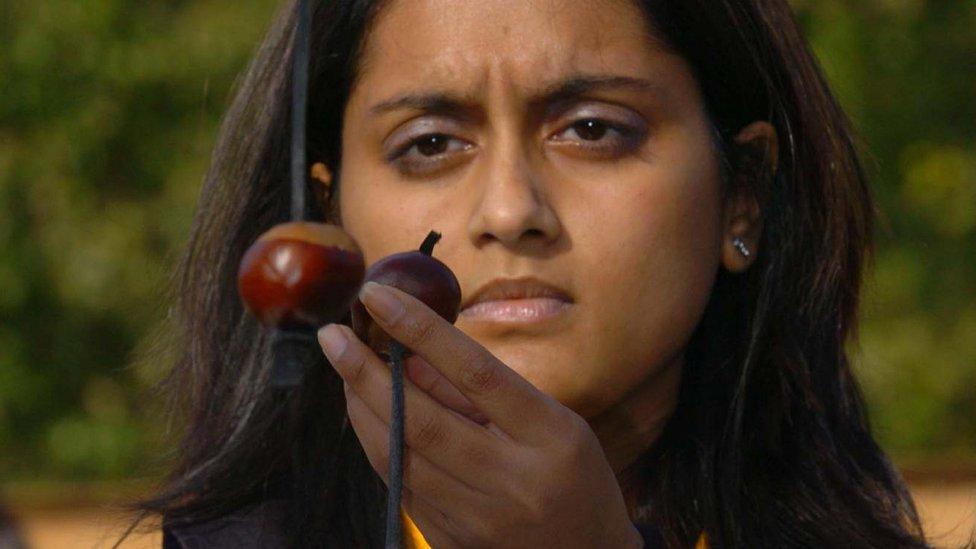
The game starts with a coin toss with the winner choosing whether to strike or receive
A minimum distance of no less than 20cm (8in) of lace must be between knuckle and nut for both striking and receiving players
Each player takes three alternate strikes at the opponent's conker
Each attempted strike must be clearly aimed at the nut with reasonable force
The game will be decided once one of the conkers is smashed. A small piece of nut or skin (a third or less) remaining shall be judged out; it must be enough to mount an attack
If both nuts smash at the same time, then new conkers are drawn

While conkers is usually played in autumn when the horse chestnuts fall from their trees, the game can be played at any time according to King Conker.
Some enthusiasts, he says, enjoy a game of conkers during a summer barbecue.
"If you freeze your conkers and you get them out a day before you have a barbecue you can have a competition like that.
"A good conker can last for years."

Follow East of England news on Facebook, external, Instagram, external and X, external. Got a story? Email eastofenglandnews@bbc.co.uk, external or WhatsApp 0800 169 1830
- Published10 October 2022
